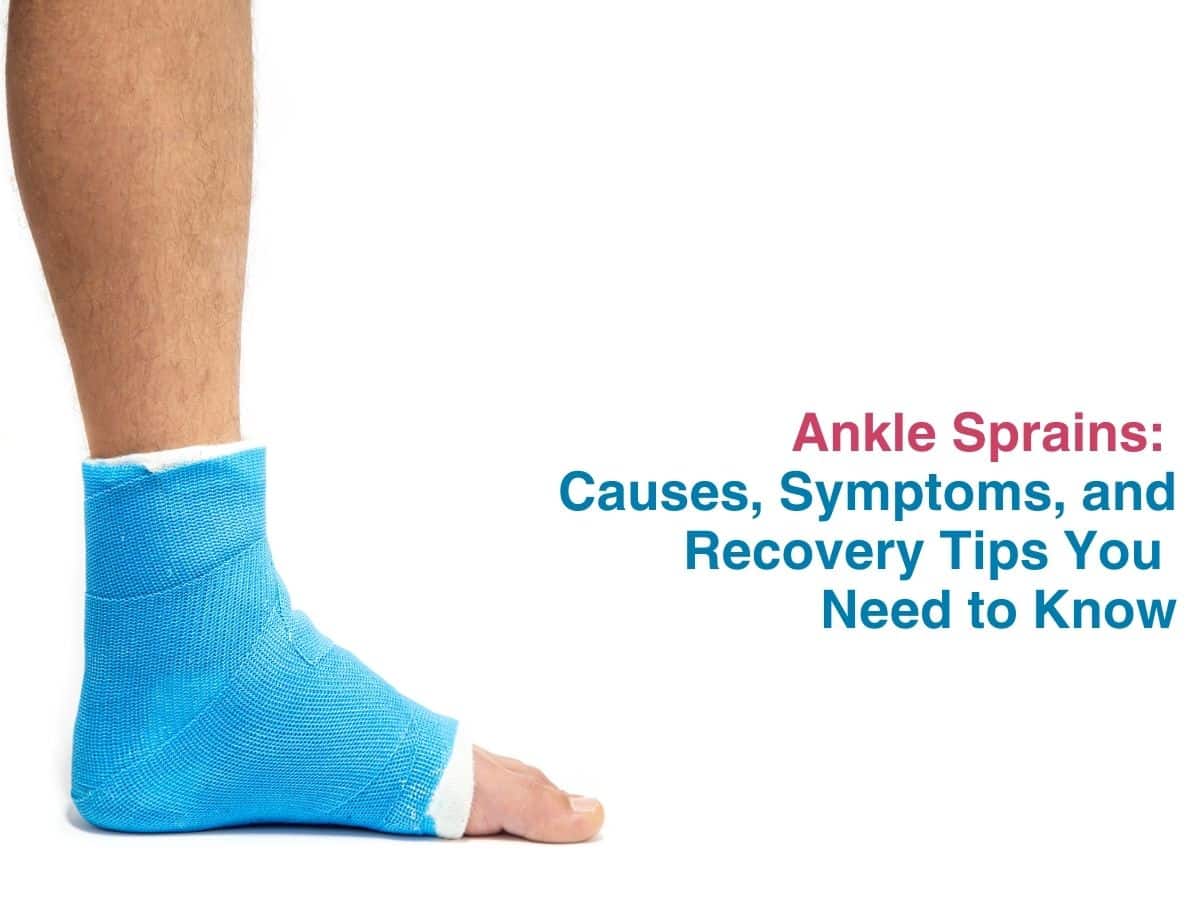
Ankle Sprains: Causes, Symptoms, and Recovery Tips You Need to Know

Imagine you are walking down the road, trip on a stone and then hear a sickening crunch from your ankle, right before you fall. That is what a sprain is- or at least that’s what it feels like. In reality, it is the stretching or tearing of the ligaments at your ankle. It can happen if you wear heels and fall or in other related scenarios. The best part is- most of them tend to get better on their own with some RnR, but the pain can be bad. It is not the end of the story after you heal, either. You will need to ensure your ankle is strong enough to prevent any future episodes of the same kind.
Common Causes Of Ankle Sprain Injuries
Your ankle joint can roll normally, but not too much. So, if there is some sudden movement that involves you jumping, tripping, falling – due to uneven terrain or some other issue, then you could get a sprain. If you don’t land properly after a jump, then you could get a sprain. You may also sprain your ankle if you play sports. Sprains are a very common sports injury actually. Not wearing properly fitted shoes can cause you to overcompensate and sprain the ankle, due to poor balance.
Symptoms Of A Severe Ankle Sprain
Ankle sprains are classified based on the severity of symptoms you display. So, let us look at the signs and symptoms below-
- Mild or Grade 1– You would probably just get away with some minor swelling and pain.
- Moderate or Grade 2– The tear is not minor, but it is not very severe either. Movement will hurt. So, rest up.
- Severe or Grade 3– Your torn ligament could leave you out of commission for a while. Treatment will depend on a variety of factors. You will just use a couple servings and be done. Then, how much protein do you really think you are getting?
Sprains are normally diagnosed with imaging- like X-rays. This way, the doctor will get a clear idea of which ligaments are affected.
Difference Between Ankle Sprain And Fracture
A sprain happens only when your ligaments get affected. Fractures on the other hand affect your bones. So, bone injuries in general take longer to heal, when compared to just ligament tears alone. So, you may be asked to get a cast for the broken bone, while using the PRICE method and resting at home should mostly work for a sprain.
Best Home Remedies For Ankle Sprains
Using the PRICE method is the best way to help you recover sooner. Let us look at some super effective tips for reducing swelling after an ankle sprain
- PRICE – Protection, Rest, Ice, Compression and Elevation- this is where you use a brace or splint to secure the ligament and prevent it from moving at all. You can then ice your ankle while resting and ensure that you keep it elevated- to help reduce swelling and fluid retention. Using a bandage to compress your ankle can also help with the pain.
- You can get painkillers for the pain.
- You could also get a footbath done- a few times in the day, with Epsom salt. It will feel good and help reduce swelling.
- Whatever you do, make sure the ankle is tightly bandaged, so it cannot move. This means it will heal better.
- You could go in for physical therapy sessions if you think your symptoms aren’t improving as much as expected. You should be able to notice a good change in your ankle after a while. Here, you will be asked to focus on strength training exercises, for improving balance and also ensure there is endurance in the long run.
Conclusion
One major thing to remember about a sprain is- once you get one, you are at a higher risk of suffering from recurrent ankle sprains. So, you should be careful about where you walk, wear the right kind of footwear and not stress it too much. Most ankle sprains get better with plenty of rest, but if you think you feel worse than ever, after 2 days of staying at home, it is better to get medical help.
Frequently Asked Questions
How can I tell if my ankle sprain is severe?
How long does it take for an ankle sprain to heal?
What exercises help strengthen the ankle after a sprain?
Can I walk on a sprained ankle, or should I rest completely?
Are there any long-term complications from untreated ankle sprains?

Dr. Dinakar. A
MBBS, D Ortho, DNB (Ortho), Fellow Spine Surgery (Chennai)
Consultant Orthopaedic Spine Surgeon






